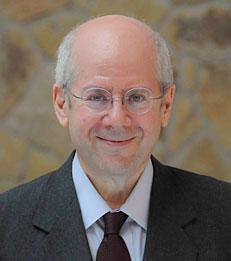Opinion
The Fed’s Favorite Inflation Predictors Aren’t Very Predictive
—


We conclude that the Fed needs to remain vigilant.
By Kim Schoenholtz, Stephen G. Cecchetti, Michael E. Feroli, Peter Hooper and Anil Kashyap
The Federal Reserve has met one part of its legal mandate: Unemployment is low enough that most people looking for a job can usually find one. Yet interest rates in the United States remain at historic lows. The reason is that inflation remains below the central bank’s target of 2 percent per year, and the Fed is reluctant to raise rates quickly until policymakers are confident that inflation will return to its desired level.
So the key question facing both Fed policymakers and anyone else interested in the future of interest rates is: When will inflation rise? Both conventional wisdom and the Fed’s official communications emphasize two main factors that drive inflation. First, there is un- and underemployment, what economists call “labor market slack”: When more people are out of work, it’s harder for employees to demand higher pay. This suggests that more slack results in lower inflation because when wages stagnate, so do prices. The second factor is the expectation of future inflation: The more inflation people expect, the more workers will demand raises and businesses will raise prices in anticipation. That is, higher expected inflation results in bigger price increases.
But in a report released Friday as part of the U.S. Monetary Policy Forum in New York, we argue that the focus on these two factors is too narrow. We find that the strongest predictor of what inflation will do in the near future is what it has done in the recent past. In statistical jargon, we find that inflation is highly persistent, fluctuating around a slow-moving trend. This long-term trend is not sensitive to unemployment or to inflation expectations.
Read full article as published by FiveThirtyEight.
___
Kim Schoenholtz is Professor of Management Practice in the Department of Economics and Director of the Center for Global Economy and Business.
So the key question facing both Fed policymakers and anyone else interested in the future of interest rates is: When will inflation rise? Both conventional wisdom and the Fed’s official communications emphasize two main factors that drive inflation. First, there is un- and underemployment, what economists call “labor market slack”: When more people are out of work, it’s harder for employees to demand higher pay. This suggests that more slack results in lower inflation because when wages stagnate, so do prices. The second factor is the expectation of future inflation: The more inflation people expect, the more workers will demand raises and businesses will raise prices in anticipation. That is, higher expected inflation results in bigger price increases.
But in a report released Friday as part of the U.S. Monetary Policy Forum in New York, we argue that the focus on these two factors is too narrow. We find that the strongest predictor of what inflation will do in the near future is what it has done in the recent past. In statistical jargon, we find that inflation is highly persistent, fluctuating around a slow-moving trend. This long-term trend is not sensitive to unemployment or to inflation expectations.
Read full article as published by FiveThirtyEight.
___
Kim Schoenholtz is Professor of Management Practice in the Department of Economics and Director of the Center for Global Economy and Business.
